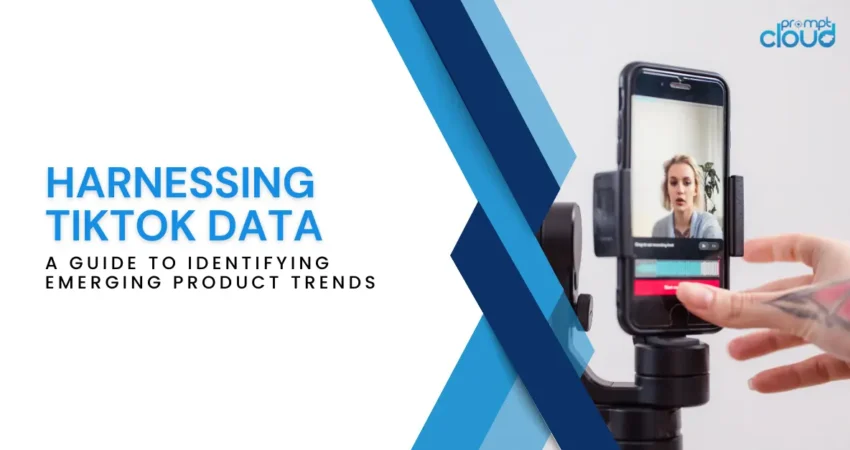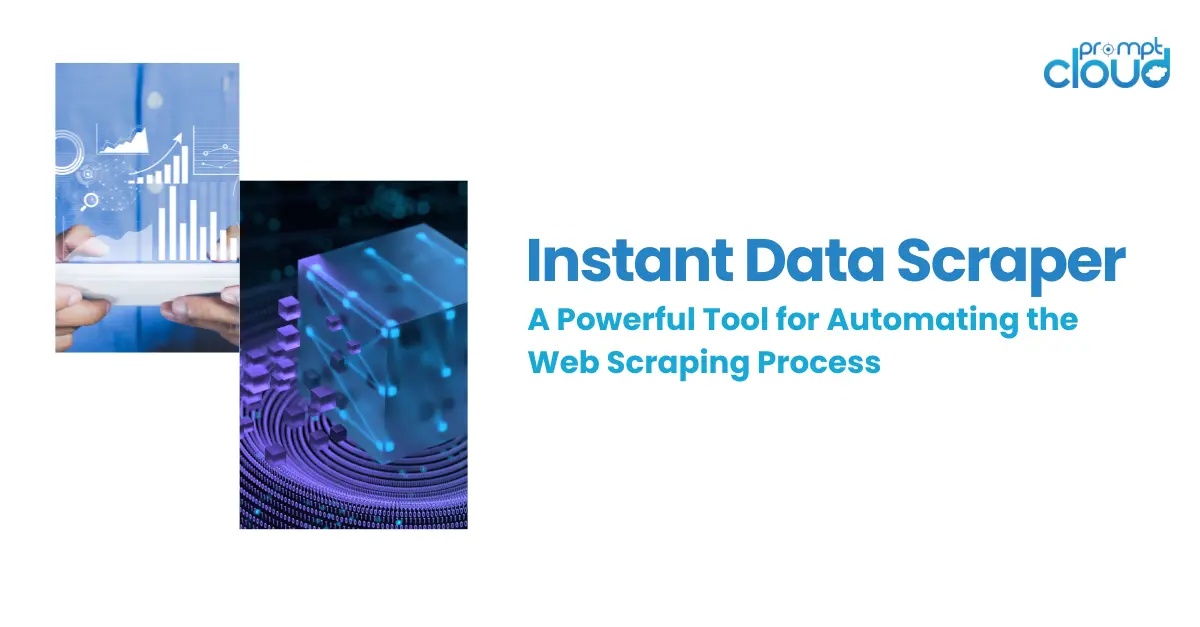
In the ever-evolving landscape of social media, TikTok has emerged as a powerhouse for trendsetting and cultural influence, particularly among younger demographics. Its unique format, combining short-form video content with a highly personalized algorithm, has turned it into a fertile ground for emerging trends, especially in the realm of consumer products. For businesses looking to stay ahead of the curve, harnessing TikTok product trends scraping data can provide invaluable insights into consumer preferences and emerging trends. Here’s a guide to leveraging TikTok data for identifying product trends that could shape the market.
Understanding TikTok’s Ecosystem
Source: www.apify.com
Understanding TikTok’s ecosystem is akin to deciphering the DNA of one of the most dynamic and influential social media platforms of our time. At its core, TikTok is not just about videos; it’s a vibrant community where trends are born, evolve, and spread at an unprecedented pace. The platform’s unique algorithm and community-driven content creation have turned it into a fertile ground for viral trends and a goldmine for businesses looking to tap into the zeitgeist of consumer behavior. Here’s a deeper dive into the elements that make TikTok’s ecosystem so potent for trend discovery.
The Algorithm: Personalization at Scale
TikTok’s algorithm is a marvel of machine learning, designed to serve users content that they find engaging. Unlike other social platforms where following dictates content flow, TikTok’s “For You Page” (FYP) leverages user interactions, video information, and device/account settings to personalize content recommendations. This level of personalization ensures that trends can emerge from niche communities and reach a broader audience rapidly, making it an ideal platform for spotting early signals of product interest.
Challenges and hashtags are the lifeblood of TikTok, serving as catalysts for community participation and trendsetting. Challenges often involve users creating content around a specific theme or activity, frequently tied to a hashtag. This not only facilitates content discovery but also encourages mass participation, propelling products or themes to viral status. Hashtags, on the other hand, help aggregate content under unified themes, making it easier for businesses to track the popularity and engagement of specific trends or products.
Influential Creators: The Trendsetters
Influencers and creators on TikTok wield significant power in shaping consumer preferences and trends. With the ability to reach millions of followers, these trendsetters can catapult products from obscurity to must-have status with just a few posts. Their endorsement or creative use of a product can serve as a strong signal of its potential to become a trend. Moreover, TikTok’s creator economy is diverse, with influencers spanning various niches, from fashion and beauty to gadgets and DIY, offering multiple avenues for product discovery and promotion.
Tools for TikTok Data Extraction
Navigating the dynamic and ever-evolving landscape of TikTok for data extraction requires a nuanced understanding of the tools and technologies available. As TikTok product trends scraping continues to cement its place as a pivotal platform for digital marketing and trend analysis, leveraging the right tools to extract and analyze TikTok data becomes indispensable. Here’s a deeper dive into the array of tools available for TikTok data extraction, highlighting their unique features and how they cater to different analytical needs:
TikTok Official API
For those seeking a direct and reliable method to access TikTok data, the platform’s official API is the go-to resource. It offers developers controlled access to TikTok’s public data, including user profiles, video posts, comments, and hashtag information.
- Pros: Data accessed through the API is reliable and complies with TikTok’s terms of service.
- Cons: Access is limited to what TikTok chooses to make available, and there are rate limits on how much data you can pull.
Octoparse
Octoparse is a powerful, no-code web scraping tool that allows users to automate data extraction from websites, including TikTok. It features a user-friendly interface and cloud services to run scraping tasks, making it accessible for non-technical users.
- Pros: User-friendly and suitable for those without programming knowledge. Can handle dynamic websites powered by JavaScript, like TikTok.
- Cons: The complexity of the tasks might require a paid subscription for optimal performance.
Pentaho
Pentaho is a comprehensive data integration and business analytics platform that can be configured to extract data from various sources, including social media platforms like TikTok. It’s ideal for businesses looking to integrate TikTok data into their broader data analytics workflow.
- Pros: Offers extensive data integration and analytics features. Suitable for enterprises.
- Cons: Requires technical knowledge to set up and integrate.
DataMiner
DataMiner is a Chrome and Edge browser extension that allows users to scrape data from any website, including TikTok. It’s a versatile tool that can extract data displayed on web pages into a structured format.
- Pros: Flexible and relatively easy to use. Good for extracting displayed data on pages.
- Cons: Limited by what is visible on the webpage and might not be as effective for deeply nested or dynamically loaded content.
PhantomBuster
PhantomBuster provides a suite of automation tools for social media platforms, including TikTok. It can automate various actions like scraping hashtags, extracting follower lists, and more, offering cloud-based execution of scraping tasks.
- Pros: Highly customizable and capable of automating a wide range of actions.
- Cons: Might require some technical knowledge to set up and use effectively. Subscription-based pricing.
Brand24
Brand24 is a digital monitoring and social listening tool that can track mentions across social media platforms, including TikTok. It offers insights into engagement, sentiment analysis, and the reach of your hashtags or keywords.
- Pros: Easy to use with a focus on monitoring and analytics. Great for tracking brand mentions and sentiment.
- Cons: More focused on monitoring than deep data extraction.
Selecting the appropriate tool for TikTok data extraction hinges on several factors: the scale of data required, the specific insights you aim to glean, technical expertise, and budget considerations. For businesses seeking to integrate TikTok data into their marketing strategy or competitive analysis, leveraging a combination of these tools can provide a comprehensive overview of the TikTok landscape. Remember, regardless of the tool chosen, always prioritize ethical data extraction practices that respect user privacy and comply with TikTok’s policies.
Identifying Emerging Trends
- Monitor Popular Hashtags and Challenges: Many product trends on TikTok gain momentum through challenges and associated hashtags. By monitoring these hashtags, businesses can identify products that are catching the public’s eye.
- Track Influencer Content: Influencers play a pivotal role in shaping trends on TikTok. Keeping an eye on content from popular TikTok creators can provide early signals of emerging product trends.
- Analyze User Engagement: Engagement metrics such as likes, shares, and comments can indicate how well a product or concept is being received. High engagement levels often correlate with a higher interest in the product.
- Sentiment Analysis: Beyond quantitative metrics, analyzing the sentiment of comments and interactions can offer deeper insights into consumer perceptions and potential product demand.
Leveraging TikTok Data for Business Strategy
- Product Development and Innovation: Insights from TikTok product trends scraping can inform product development, helping businesses create products that resonate with current consumer interests.
- Marketing and Promotion Strategies: Understanding what types of products are trending on TikTok can guide marketing strategies, allowing businesses to tap into current conversations and engage with their target audience more effectively.
- Market Forecasting: By identifying patterns in product popularity on TikTok, businesses can forecast market trends and adjust their strategies accordingly.
Challenges and Considerations
- Data Volume and Velocity: TikTok generates vast amounts of data at a high velocity. Businesses need robust data processing capabilities to effectively harness this data.
- Evolving Trends: Trends on TikTok can evolve rapidly. Continuous monitoring and analysis are essential to stay current.
- Content Authenticity: It’s crucial to discern genuine trends from those artificially inflated by marketing campaigns or bots.
Ethical and Legal Considerations
When extracting and using data from TikTok, businesses must navigate ethical and legal considerations, including user privacy and data usage policies. Ensuring compliance with these regulations is crucial to maintain trust and avoid potential legal issues.
Conclusion
Harnessing TikTok data to identify emerging product trends offers businesses a competitive edge in a fast-paced market. By understanding TikTok’s ecosystem, utilizing the right tools for data extraction, and applying strategic analysis, businesses can uncover valuable insights into consumer behavior and preferences. This approach not only aids in product development and marketing but also enhances market responsiveness, allowing businesses to capitalize on trends as they emerge. As with any data-driven strategy, a balance between innovation, ethical considerations, and consumer privacy is essential for long-term success.
Frequently Asked Questions
Does TikTok allow scraping?
TikTok, like many other social media platforms, has specific terms of service and use policies that generally restrict automated data scraping activities. These policies are in place to protect the privacy and security of users, as well as the integrity of the platform’s data. Unauthorized scraping could lead to legal actions, account bans, or other penalties.
Understanding TikTok’s Policy:
TikTok’s terms and conditions outline what users can and cannot do on the platform, including the automated extraction of information. Their policies aim to prevent activities that could harm the user experience, infringe on privacy, or result in data being used for unauthorized purposes.
Legal and Ethical Considerations:
- User Privacy: Respecting user privacy is crucial. Unauthorized scraping of personal data could violate privacy laws and regulations such as GDPR in Europe or CCPA in California.
- Intellectual Property Rights: Content on TikTok is protected by intellectual property laws. Using scraped data, especially for commercial purposes, without permission could infringe on these rights.
- Rate Limiting and Access Control: Platforms like TikTok implement rate limiting and access control mechanisms to prevent excessive requests from overloading their servers, ensuring stability and availability for all users. Scraping activities could potentially disrupt these efforts.
Scraping TikTok hashtags, or extracting data associated with specific hashtags from TikTok, requires careful consideration of both technical approaches and compliance with TikTok’s terms of service and relevant legal regulations. As direct scraping can violate TikTok’s policies, using their official API is the recommended method to access hashtag-related data legally and ethically. Here’s how you can approach this:
Using TikTok’s Official API
TikTok offers an official API that allows developers to access certain types of data on the platform for approved purposes. While the API’s capabilities and access levels might change, it typically provides a way to retrieve public data related to hashtags, including metadata and content associated with them.
Steps to Use TikTok’s API:
- Apply for Access: To use the TikTok API, you first need to apply for access through the TikTok for Developers program. This process involves agreeing to TikTok’s terms and conditions for developers and possibly outlining your intended use of the data.
- Review the Documentation: Once you have access, review the API documentation carefully to understand the endpoints available for hashtags, the rate limits, and any data restrictions.
- Authenticate: Follow the API’s authentication process, which usually involves generating API keys or tokens that must be included in your API requests.
- Make API Requests: Use the API endpoints related to hashtags to fetch the data you need. For example, you might use a “search” endpoint to find videos associated with a specific hashtag. Ensure your requests comply with the API’s rate limits to avoid being blocked.
- Handle and Process Data: Once you retrieve the data, you’ll need to process it according to your requirements. This might involve parsing JSON responses, extracting relevant information, and possibly storing the data in a database for further analysis.
How do I collect data from TikTok?
Collecting data from TikTok in a responsible and legal manner typically involves utilizing the platform’s official API, adhering to its terms of service, and considering any relevant data protection laws. Here’s a step-by-step guide on how to approach data collection from TikTok:
Step 1: TikTok Developer Account and API Access
- Register for a Developer Account: To access TikTok’s official API, you first need to sign up for a developer account on the TikTok for Developers portal. This process involves providing some basic information about yourself or your organization.
- Apply for API Access: Once you have a developer account, apply for access to the TikTok API. Your application will need to detail the nature of your project and how you plan to use the data. Approval times can vary, and access may be granted based on the intended use case.
- Review the Documentation: After gaining access, thoroughly review the API documentation. TikTok provides several endpoints for accessing different types of data (e.g., user posts, profile information, hashtag content), along with details on rate limits, data models, and authentication methods.
Step 2: Authentication
To use the TikTok API, you’ll need to authenticate your requests. This usually involves generating an API key or obtaining an access token through OAuth, depending on the level of access required and the type of data you’re seeking.
Step 3: Making API Requests
With authentication set up, you can start making requests to the TikTok API. Use the endpoints relevant to the data you’re interested in, such as fetching posts associated with a specific hashtag or retrieving information about a TikTok user.
- Structure your requests according to the API documentation, including any required parameters and headers.
- Pay attention to rate limits to avoid exceeding the number of allowed requests in a given timeframe.
Step 4: Handling and Processing Data
The data returned from the TikTok API will typically be in JSON format. You’ll need to parse this data and extract the information relevant to your project.
- Use programming languages like Python, which has libraries (e.g., requests for making HTTP requests and json for parsing JSON data) to streamline these tasks.
- Store the extracted data in a structured format, such as a database or spreadsheet, for further analysis.
Step 5: Compliance and Ethical Considerations
- Adhere to TikTok’s Terms of Service: Ensure your data collection practices do not violate TikTok’s terms, including restrictions on data usage and sharing.
- Respect User Privacy: Be mindful of privacy issues, especially when collecting or analyzing personal data. Follow regulations like GDPR in Europe or CCPA in California, which require specific measures for data protection and user consent.
- Use Data Responsibly: Collect and use data in a way that is ethical and responsible. Avoid actions that could harm users or misuse their information.
How do I scrape a product from TikTok?
Scraping products or any content from TikTok is not straightforward due to the platform’s strong measures against automated data extraction. Technically, one could use web scraping tools or software designed for data extraction, but these methods may breach TikTok’s terms of service. If you choose to proceed, typical steps might include:
- Understanding the Structure: Analyze TikTok’s web or app structure to determine where product information is stored.
- Choosing a Tool: Tools like Python with libraries such as BeautifulSoup or Scrapy could be used to extract HTML content. However, because TikTok is heavily JavaScript-driven, tools that can handle JavaScript rendering like Selenium might be necessary.
- Writing the Code: Write scripts that navigate to the product pages, handle pagination, and extract necessary details such as product names, prices, descriptions, and images.
- Handling Data: Store the scraped data in a structured format like CSV, JSON, or a database.
- Respecting Rate Limits: Ensure your script respects TikTok’s rate limiting to avoid overloading their servers or having your IP address banned.
Remember, always consider the legal and ethical implications before attempting to scrape data from TikTok or any other platform. Consulting with legal professionals regarding the compliance of your actions with applicable laws and terms of service is highly recommended.
What are the anti scraping measures of TikTok?
TikTok, like many modern web platforms, implements several anti-scraping measures to protect its data and ensure the integrity and performance of its services. Here are some common anti-scraping techniques that TikTok might use:
Rate Limiting
TikTok can limit the number of requests an IP address can make in a given period. Excessive requests from a single IP can trigger a temporary or permanent ban, making it difficult for scrapers to access the site continuously.
CAPTCHA Challenges
To differentiate between human users and automated bots, TikTok may employ CAPTCHAs. These challenges must be solved to continue accessing the site, which can effectively block or slow down unsophisticated scraping tools.
Dynamic Content
TikTok’s content is dynamically loaded through JavaScript and AJAX calls, which means that the HTML content changes without the page itself being reloaded. This can complicate scraping because the data must be rendered or executed, typically requiring more advanced tools like Selenium that can mimic a real user’s browser.
User-Agent Verification
TikTok may check the user-agent string of the browser accessing its services. Requests from known data center IPs or from user-agents associated with automated scripts may be blocked or served different content.
API Restrictions
Access to TikTok’s official API is regulated, and using it to extract data usually requires an API key, which can be revoked if misused. Unauthorized API calls can lead to access being blocked.
Legal and Technical Obfuscation
TikTok might use legal (terms of service agreements) and technical (code obfuscation, rotating IP addresses, etc.) strategies to make scraping more difficult and legally risky.
Behavior Analysis
TikTok can analyze the behavior patterns of a user to detect anomalies typical of bots, such as repetitive, high-speed interactions with the platform, and block or restrict access accordingly.
These measures are designed to protect TikTok’s data and user experience, and attempting to circumvent them can have legal repercussions. Always consider the ethical and legal implications before engaging in scraping activities.



















